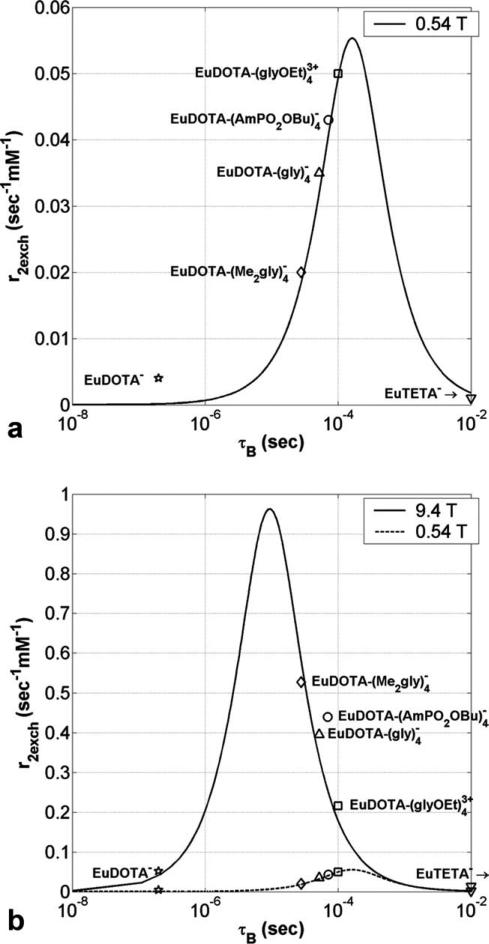FIG. 2.
a: Transverse relaxivity (s–1 mM–1) versus bound water lifetime τB (s) for Eu3+ at 0.54 T and 37°C as predicted by the Swift–Connick equation (Eq. 5) showing a maximum r2exch of 0.055 s–1 mM–1 at 163 μs. b: The same data but now at 9.4 T. The maximum r2exch is now 17.4 times larger and occurs at a faster exchange rate (0.962 s–1 mM–1 at 9.36 μs). Markers for the measured Eu3+ data are in good agreement with both theoretical Swift–Connick plots. A Δω of 42.5 ppm was used in both plots, with each Eu3+ compound being within ±2 ppm of this value.

